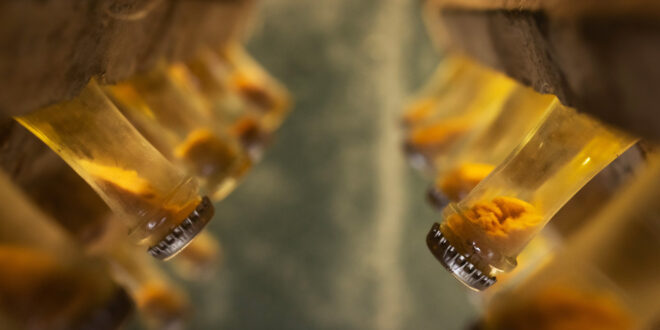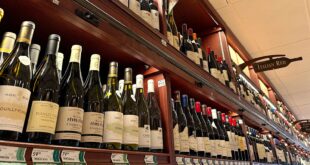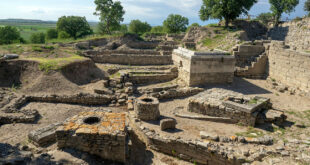[ad_1] 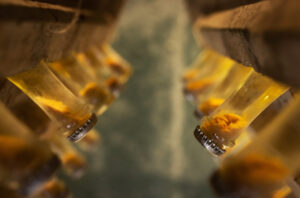 Bottles sparkling wine resting sur pointe, with the lees concentrated in the neck of the bottle
Bottles sparkling wine resting sur pointe, with the lees concentrated in the neck of the bottle
Ageing ‘sur lie’ (the french for ‘on the lees’) is an important tool at the disposal of winemakers. It’s integral to the character of multiple wines, and even to the core identity of certain appellations and styles.
But what are lees and what’s the impact of ageing wine in their presence?
Yeasty bits
Lees – an old English term for sediments deposited at the bottom of a vessel – are mostly made up of dead yeast cells, a byproduct of alcoholic fermentation. Undisturbed, they will naturally decant to the bottom of the fermentation vessel during and after the process.
Winemakers generally differentiate between gross and fine lees, an important distinction because the different size indicates sediments of different nature – and with different outcomes if left in contact with the wine during ageing. Gross lees refer to larger particles, namely yeast cells, both dead and viable, and cellular matter (pieces of skins, stems, and seeds leftover after fermentation) from the grape. Fine lees are smaller, taking longer to precipitate and interact with other compounds in the wine. The latter are associated with desirable impact on the final wine, while the former can lead to the development of undesirable aromas and flavours.
Following alcoholic fermentation winemakers decide whether they will separate the wine from the sediments or let the lees remain inside the vessel where the wine will age, either for the whole or partial duration of the ageing process. It is common to restrict the time spent on the gross lees while allowing the wine to spend longer in contact with the finer particles.
Most commercially available wine, produced for quick bottling and immediate consumption, will be separated from the lees shortly after alcoholic fermentation is completed, clarified and stabilised.
So what happens if, otherwise, the wine is left ‘sur lie’ for a given period?
Moreish transformation
If managed correctly, allowing the wine to age in contact with its lees can add multiple flavour, textural and structural benefits to a wine.
The dead yeast cells that make up most of the lees will go through a process of autolysis, i.e. their internal structures will be destroyed by their own enzymes. This process releases sugars and peptides that will contribute to an unctuous, buttery mouthfeel in the final wine, while some proteins bind with tannins (if these are present) adding to the velvety texture.
Overall, the wine becomes chemically more stable: mannoproteins reduce tartrate precipitation and promote protein stability; oxidation is inhibited by the release of sulphur compounds and reducing enzymes – which can be unpleasant if left to dominate. This issue can be managed by removing the gross lees early on and also by performing bâtonnage. Also known as lees stirring, bâttonage prevents the accumulation of hydrogen sulphide and also ensures that the wine has homogenous contact with the lees (on the other hand, by increasing liquid/lees contact surface the bâttonage will encourage greater unctuosity and lees ageing-induced aromas).
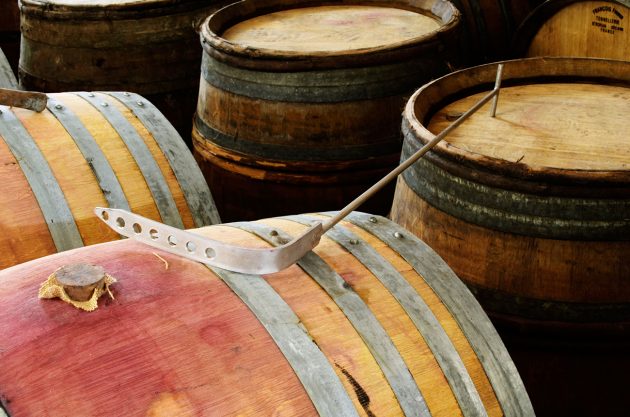
Tool used for stirring lees during bâtonnage, credit Per Karlsson, BKWine 2 / Alamy Stock Photo
Increased stability explains why ageing on the lees is a resource commonly used by low intervention winemakers, as it decreases the need for the wine to undergo clarification and/or stabilisation processes to become stable and ready to bottle.
In addition to the creaminess mentioned above, some flavours – acacia, oatmeal biscuit, brioche, bread dough, toasted nuts – are telltale of sur lie ageing. Again, these are a result of the present of complex protein molecules that serve as their precursors.
Furthermore, lees encourage malolactic fermentation as they serve as micronutrients for the lactic bacteria that perform it. By promoting this process, lees further contribute to the unctuosity and butteriness…
[ad_2]Source : https://www.decanter.com/learn/what-is-sur-lie-ageing-and-what-does-it-do-to-wine-ask-decanter-465202/
